This Monday will mark a momentous event for the Monday Ground Edition. I’ve been publishing this special edition since July 15, 2009 and ever since I began many things have changed.
I’ve had some wonderful opportunities to work with some guest writers in the field of archaeology and anthropology, academia, and fellow bloggers. In the beginning I was taking the time every weekend, trying to hit that 1500 word mark to make the editions not only teach you the reader something new, but also entertain.
I hope I, as well as my fellow contributors, were able to do this for you. I suppose when your material starts to show up on USAToday, Treehugger.com and Discovery News, you are actually making a dent.
My question for you is what can be changed? Or should everything stay the same? I’d like to know what topics you would like to see explored and I’d like to give my writers a chance to provide the research for you on Ancient Digger.
I’ve had several individuals express the need for some Prehistory topics and more Genetics. This is not my area, but I have the writers for these particular topics. So if you could take some time out of your hectic and busy lives, please let me know in the comments section or use the contact us form to express your ideas.
I’d also like to include a contest every month, but I’m working on the details for that and what the prize will be. It seems making a video for the Tell Tails Week was a bit too time consuming for some so I’m trying something a bit more fun and easy to work with. The winner will most likely win an Ancient Digger T-shirt to wear proudly around town. I’ve already sent many to my friends and family and I can already tell it’s making a difference. If you have any ideas for contests appropriate for Ancient Digger, please don’t hesitate to speak up!
Now that business is out of the way, I’d like to kick off the New Year by commemorating all of the 2010 Monday Ground Editions. Once I started sifting through the editions I was thinking, “How in the world did I go to school full time and keep this website updated?”
Thanks again for your amazing support and readership. I can’t tell you how much I’ve learned from all of you. Your emails and messages have helped me stay in the know so to speak. You challenge me and inspire me to keep going everyday.
Ancient Digger is only getting bigger and better so stay tuned.
Monday Ground Up 2010 Editions
Thingvellir in Iceland Thingvellir is a national park situated in Bláskógarbyggð in southwestern Iceland, near the peninsula of Reykjanes and the Hengill volcanic area. Not only does this glorious location offer natural landscapes to the many visitors every year, but the site embodies Iceland's political, social, and religious history. Read more: Thingvellir in Iceland |
Otto Von Bismarck: How he Used War to Justify German Unification Otto von Bismarck was not moved by national unity, although he felt compelled to manipulate it instead of using it for a guide in political affairs. His quest was to obtain internal stability for the Hohenzollern monarchy and more external power for Prussia. However, Austria refused to accept dual supremacy over Germany on a foundation more favorable to Prussia. Otto von Bismarck was not moved by national unity, although he felt compelled to manipulate it instead of using it for a guide in political affairs. His quest was to obtain internal stability for the Hohenzollern monarchy and more external power for Prussia. However, Austria refused to accept dual supremacy over Germany on a foundation more favorable to Prussia. |
The Congress of Vienna After the defeat of Napoleon, there was a desire to convert back to the old order to contain revolution and revolutionary forces. This was attempted by a peace settlement in 1814 including four major enemies that used several approaches to eliminate the infighting within the global powers. After the defeat of Napoleon, there was a desire to convert back to the old order to contain revolution and revolutionary forces. This was attempted by a peace settlement in 1814 including four major enemies that used several approaches to eliminate the infighting within the global powers.Read more: The Congress of Vienna |
Cruger and DePeyster Sugar Mill in New Smyrna In 1835, the Seminole Indians raided the Cruger and Depeyster Sugar Mill, running off the overseer in the process. They burned the entire complex and destroyed other plantations throughout the region with the assistance of the the sugar mill slaves themselves. In 1835, the Seminole Indians raided the Cruger and Depeyster Sugar Mill, running off the overseer in the process. They burned the entire complex and destroyed other plantations throughout the region with the assistance of the the sugar mill slaves themselves.Read more: Cruger and DePeyster Sugar Mill in New Smyrna |
The Revolutions of 1848 and How Russia and Great Britain Managed to Avoid ThemAfter the Congress of Vienna had successfully maintained order, in 1830 the forces of change started to wreak havoc with the conservatives in Europe. In 1848, the nationalists and the liberals began to push for a new order, and in so doing, sparked the revolutions of 1848. Russia and Britain, however, had overcome revolution previously, thereby establishing new reforms prior to the Revolution of 1848.Read more: The Revolutions of 1848 and How Russia and Great Britain Managed to Avoid Them |
A Photo Tour of Cracker Creek in Port Orange Florida I set out today to visit Gamble Place at Spruce Creek in Port Orange, Florida today, however the buildings are undergoing restoration and maintenance. To be honest, I thought I had arrived in the wrong place, since I ended up at someone's private residence. I did, however, notice a visitor's center at Cracker Creek where I met a lovely lady that explained to me where I was actually at. I set out today to visit Gamble Place at Spruce Creek in Port Orange, Florida today, however the buildings are undergoing restoration and maintenance. To be honest, I thought I had arrived in the wrong place, since I ended up at someone's private residence. I did, however, notice a visitor's center at Cracker Creek where I met a lovely lady that explained to me where I was actually at.Read more: A Photo Tour of Cracker Creek in Port Orange Florida |
Charles Darwin And The Theory of Evolution Explained Charles Darwin, although thought of by evolutionists as a genius in his field, lived a lie built on the studies and research of past intellectuals. Darwin’s theories were built upon the findings of those that were given no credit in his published works, therefore he simply organized their thoughts into a book called “On the Origin of Species by Means of Natural Selection". His Theory of Evolution is a myth. It's not true. At least that's what a creationist will say. Charles Darwin, although thought of by evolutionists as a genius in his field, lived a lie built on the studies and research of past intellectuals. Darwin’s theories were built upon the findings of those that were given no credit in his published works, therefore he simply organized their thoughts into a book called “On the Origin of Species by Means of Natural Selection". His Theory of Evolution is a myth. It's not true. At least that's what a creationist will say.Read more:Charles Darwin And The Theory of Evolution Explained |
Who Were They During the Middle Ages?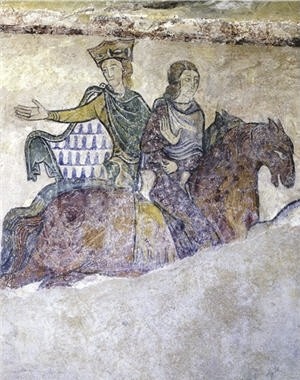 The Middle Ages were a time of great transition, artistic revelation, religious changes, and social transformations. The period covers an enormous amount of history starting from the 5th century until the 16th century. The perceptions of this period are greatly skewed, with many historians and archaeologists interpreting different traditions, literature, art, and architecture in many different ways. The Middle Ages were a time of great transition, artistic revelation, religious changes, and social transformations. The period covers an enormous amount of history starting from the 5th century until the 16th century. The perceptions of this period are greatly skewed, with many historians and archaeologists interpreting different traditions, literature, art, and architecture in many different ways.Read more: Who Were They During the Middle Ages? |
Causes of the Great Schism of Western Christianity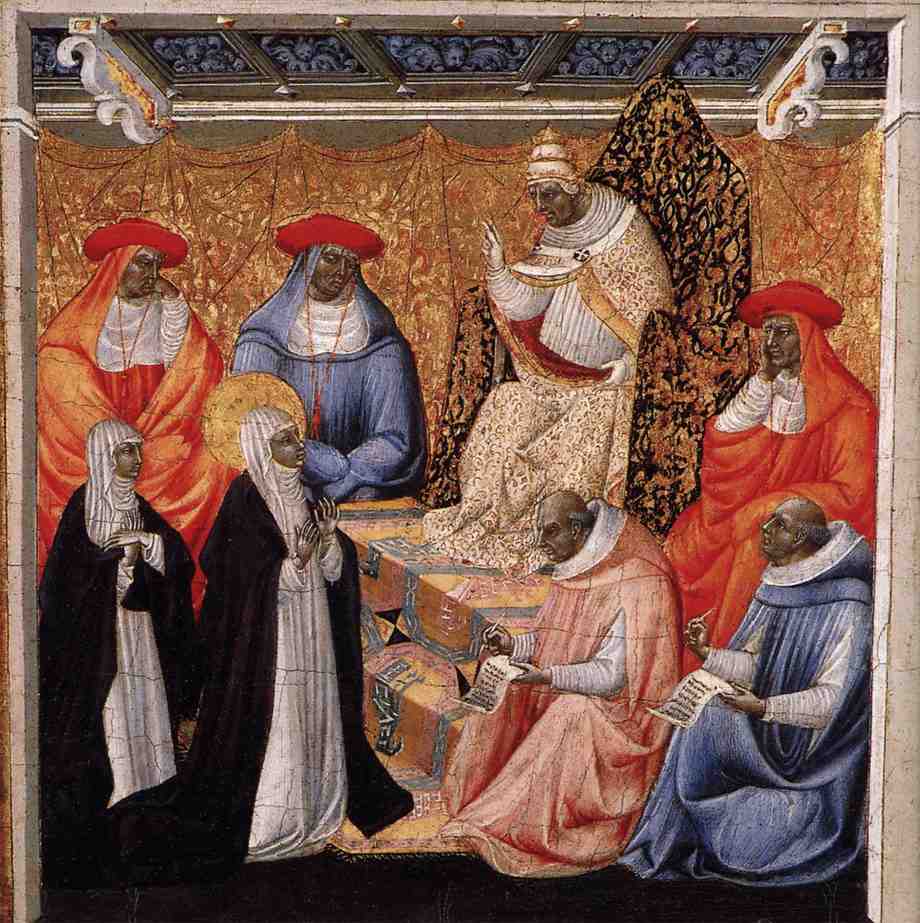 In the late 14th century and after the death of Pope Gregory XI, the college of cardinals met to elect a new pope. The citizens of Rome feared the return to a French Papacy if a Frenchman was elected. Not only that, the cardinals would open themselves up to attacks if they didn't choose an Italian. They safely elected Bari, who was crowned Pope Urban VI on Easter Sunday. In the late 14th century and after the death of Pope Gregory XI, the college of cardinals met to elect a new pope. The citizens of Rome feared the return to a French Papacy if a Frenchman was elected. Not only that, the cardinals would open themselves up to attacks if they didn't choose an Italian. They safely elected Bari, who was crowned Pope Urban VI on Easter Sunday.Read more: Causes of the Great Schism of Western Christianity |
The Thracian Tomb of Kazanlak in Bulgaria The Tomb of Kazanlak dates back to the fourth century B.C.E and is that of an important chieftain of the Odrysae Tribe. The Odrysae occupied the southern part of the Thracian territory, now central Bulgaria. It’s located 5 miles from Seuthopolis and was surprisingly discovered by accident. When excavation began in 1944, a tholos-a tomb shaped like beehive was discovered intricately decorated with murals of Hellenistic art. The Tomb of Kazanlak dates back to the fourth century B.C.E and is that of an important chieftain of the Odrysae Tribe. The Odrysae occupied the southern part of the Thracian territory, now central Bulgaria. It’s located 5 miles from Seuthopolis and was surprisingly discovered by accident. When excavation began in 1944, a tholos-a tomb shaped like beehive was discovered intricately decorated with murals of Hellenistic art.Read more:The Thracian Tomb of Kazanlak in Bulgaria |
Legendary and Haunted Glamis Castle Glamis Castle in Forfar, Scotland was the family home of Elizabeth Bowes Lyons, the late Queen Mother, and the birthplace of Princess Margaret. It's set in the "lowland valley of Strathmore, near Forfar, county town of Angus, which lies between the Sidlaw Hills to the south and the Grampian Mountains to the north, approximately 20 kilometres inland from the North Sea." Glamis Castle in Forfar, Scotland was the family home of Elizabeth Bowes Lyons, the late Queen Mother, and the birthplace of Princess Margaret. It's set in the "lowland valley of Strathmore, near Forfar, county town of Angus, which lies between the Sidlaw Hills to the south and the Grampian Mountains to the north, approximately 20 kilometres inland from the North Sea."Read more: Legendary and Haunted Glamis Castle |
Hawaiian Night Marchers and the Ghosts of Hawaii In every culture throughout history there existed a certain concept of the dead. The Hawaiian concept was more specific with Polynesian ritual and beliefs pertaining to what they called "uhane". On certain occasions, these night marchers would come back for a special procession. Read more: Hawaiian Night Marchers and the Ghosts of Hawaii |
Paracelsus, Vesalius, and Harvey and Their Contributions to Medicine Although the Scientific Revolution was associated with great accomplishments in astronomy, mathematics, and new scientific methods, we cannot ignore the great innovations in medicine. Medicine during the Middle Ages was greatly influenced by Galen who sought to study anatomy and physiology by using an animal as a cadaver; however this proved to be an insufficient model of the true anatomy of the human body. Although the Scientific Revolution was associated with great accomplishments in astronomy, mathematics, and new scientific methods, we cannot ignore the great innovations in medicine. Medicine during the Middle Ages was greatly influenced by Galen who sought to study anatomy and physiology by using an animal as a cadaver; however this proved to be an insufficient model of the true anatomy of the human body.Furthermore, Galen’s hypothesis that the body had two blood systems and diseases could be cured by looking deeper into the four humors in the body proved to be grossly erroneous. When Paracelsus, Vesalius, and Harvey came onto the medical scene during the 16th and 17th century, medicine started to evolve into a more precise and exact science. Read more: Paracelsus, Vesalius, and Harvey and Their Contributions to Medicine |
The Philosophes and Their Contributions to Economics, Politics, and Education The philosophes, the French word for "Philosopher", were a combination of statesman, politicians, scientists, professors, and social reformers, to name a few. These men shared a common view. The ability to take philosophy and use it in a way that changes the outlook of a nation or the traditions and customs using a more direct approach. The philosophes, the French word for "Philosopher", were a combination of statesman, politicians, scientists, professors, and social reformers, to name a few. These men shared a common view. The ability to take philosophy and use it in a way that changes the outlook of a nation or the traditions and customs using a more direct approach.Read more: The Philosophes and Their Contributions to Economics, Politics, and Education |
Skull Tower in Serbia The Skull Tower archaeological site dates back to around 1809 during the first revolt in Serbia, and was an Ottoman monument intended to mark the empire's success in defeating the Serbian rebels close to Nis in May 1809. The Skull Tower archaeological site dates back to around 1809 during the first revolt in Serbia, and was an Ottoman monument intended to mark the empire's success in defeating the Serbian rebels close to Nis in May 1809.Read More: Skull Tower in Serbia |
Naqsh-e Rostam Archaeological SiteRead more: Naqsh-e Rostam Archaeological Site |
The Masada Palace in Israel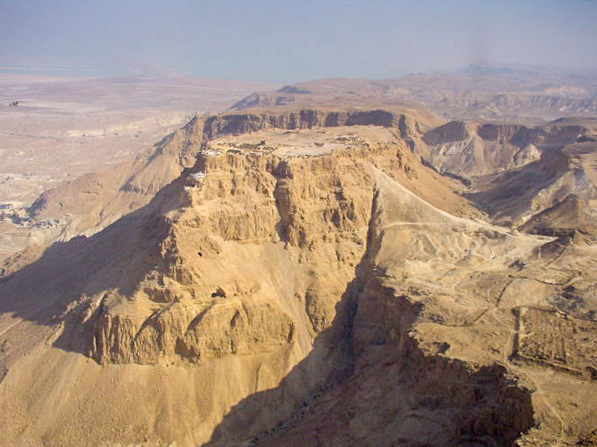 Masada in Israel was built by Herod the Great in 37BC overlooking the Dead Sea. Masada, which is actually a fortified palace, was occupied by a Roman garrison following the death of Herod the Great. It became a refuge for zealots, or Sicarii, who revolted against the Romans and returned to Jerusalem around 66 CE. Masada in Israel was built by Herod the Great in 37BC overlooking the Dead Sea. Masada, which is actually a fortified palace, was occupied by a Roman garrison following the death of Herod the Great. It became a refuge for zealots, or Sicarii, who revolted against the Romans and returned to Jerusalem around 66 CE.Read more: Masada Palace in Israel |
Knight'sTemplar Connected to Adolf HitlerRead more: Knight'sTemplar Connected to Adolf Hitler |
Major Political Developments in the History of the Soviet Union from 1945 to 1970 During the immediate postwar period, the Soviet Union first rebuilt and then expanded its economy, while maintaining centralization of communism. The Soviet Union aided post-war reconstruction in the countries of Eastern Europe while turning them into Soviet satellite states and founded the Warsaw Pact in 1955. Later, the Comecon supplied aid to the eventually victorious Communists in the People's Republic of China, and saw its influence grow elsewhere in the world. Amongst these successes, there were still political upheavals occurring during the reign of Stalin and Khrushchev, therefore leading to some significant, withstanding changes in Eastern Europe. During the immediate postwar period, the Soviet Union first rebuilt and then expanded its economy, while maintaining centralization of communism. The Soviet Union aided post-war reconstruction in the countries of Eastern Europe while turning them into Soviet satellite states and founded the Warsaw Pact in 1955. Later, the Comecon supplied aid to the eventually victorious Communists in the People's Republic of China, and saw its influence grow elsewhere in the world. Amongst these successes, there were still political upheavals occurring during the reign of Stalin and Khrushchev, therefore leading to some significant, withstanding changes in Eastern Europe.Read more: Major Political Developments in the History of the Soviet Union from 1945 to 1970 |
Early Christian Necropolis in Pecs, Hungary During the 4th century, Pecs was a Roman town known as Sopianae. The inhabitants of Sopianae were known to bury their death in a nearby necropolis. At this time, Christians were no longer being persecuted in Rome for their religion. Consequently, the ruler Constantine had also converted to Christianity on his death bed and the edict of Milan in 312 CE allowed the religion of Christianity to diverge into different parts of the world. During the 4th century, Pecs was a Roman town known as Sopianae. The inhabitants of Sopianae were known to bury their death in a nearby necropolis. At this time, Christians were no longer being persecuted in Rome for their religion. Consequently, the ruler Constantine had also converted to Christianity on his death bed and the edict of Milan in 312 CE allowed the religion of Christianity to diverge into different parts of the world.Read more: Early Christian Necropolis in Pecs, Hungary |
Liberalism During the 19th Century Liberalism, such as parliaments and constitutions, during the 19th century was making great strides in the western European states. Mass politics, due to the emergence of a mass society during the Second Industrial Revolution, paved the way for ordinary citizens to be involved in the everyday operations of political life. Therefore, while reforms encouraged expansion of political democracy through voting rights for men, one Liberal leader was hindering the political and ideological movement towards modernization, and later on the spread of liberalism would be affected by the creation of new political parties. Liberalism, such as parliaments and constitutions, during the 19th century was making great strides in the western European states. Mass politics, due to the emergence of a mass society during the Second Industrial Revolution, paved the way for ordinary citizens to be involved in the everyday operations of political life. Therefore, while reforms encouraged expansion of political democracy through voting rights for men, one Liberal leader was hindering the political and ideological movement towards modernization, and later on the spread of liberalism would be affected by the creation of new political parties.Read more: Liberalism During the 19th Century |
The Cave of the Apocalypse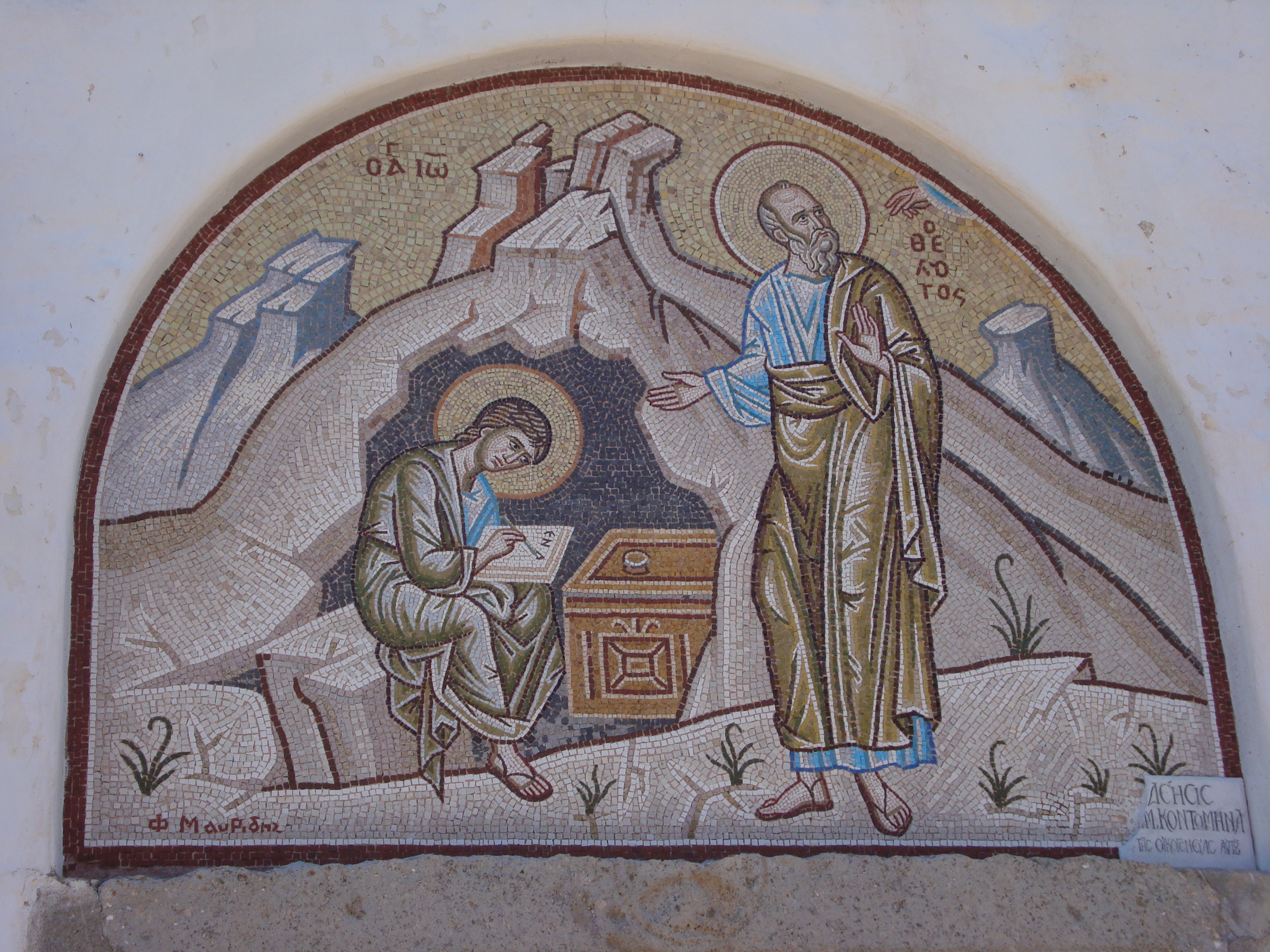 The Cave of the Apocalypse can be found on the rocky island of Patmos, deep within the monastery that surrounds it. Patmos is located north of the Greek Islands, off the southwest coast of Turkey. Many believe that St. John or John the Apostle as most people know him, lived here between Chora and Skala. The Cave of the Apocalypse can be found on the rocky island of Patmos, deep within the monastery that surrounds it. Patmos is located north of the Greek Islands, off the southwest coast of Turkey. Many believe that St. John or John the Apostle as most people know him, lived here between Chora and Skala.Read more: The Cave of the Apocalypse |
Alta Rock Carvings in Norway Just above the Arctic Circle, north of Norway, there lies a series of rock carvings, otherwise known as petroglyphs, dating back as far as 4200 BCE. The Alta Rock carvings, similar to other pre-historic paintings, depict a culture consisting of hunter gatherers. The carvings have been linked to the descendants of the Komsa, a Stone Age society late significantly increased in number during the late Ice Age. Just above the Arctic Circle, north of Norway, there lies a series of rock carvings, otherwise known as petroglyphs, dating back as far as 4200 BCE. The Alta Rock carvings, similar to other pre-historic paintings, depict a culture consisting of hunter gatherers. The carvings have been linked to the descendants of the Komsa, a Stone Age society late significantly increased in number during the late Ice Age.Read more: Alta Rock Carvings in Norway |
Rock Architecture: When It First Appeared, Why It Was Built, and What History Can It Tell Us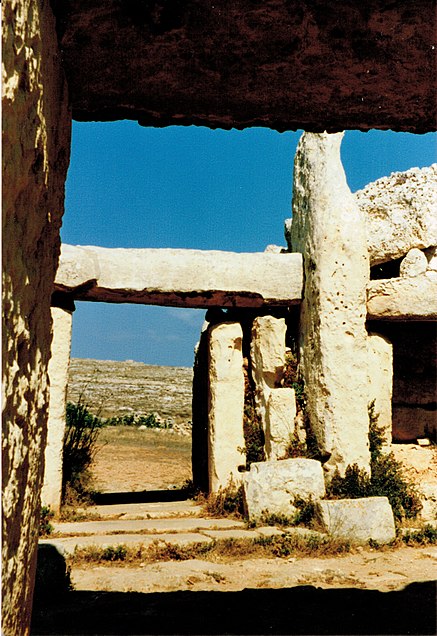 Nothing amazes me more than a temple or building constructed entirely out of stone. Carved into the mountains like Al Khazneh. The Lycian Tombs Nothing amazes me more than a temple or building constructed entirely out of stone. Carved into the mountains like Al Khazneh. The Lycian Tombs |
Mysterious Crypts..... What They Are, Why They Were Used, and Where Can They Be Found You may be wondering, what exactly is a crypt? Why were crypts used instead of cemeteries? They have such a foreboding reputation, and in most cases, they may have, however there was reasoning behind this. You and I perceive them as creepy. A room breathing and speaking death. A dungeon in the pits of the abyss we’d rather avoid at night. For those that reside in the crypts, they mean something entirely different. You may be wondering, what exactly is a crypt? Why were crypts used instead of cemeteries? They have such a foreboding reputation, and in most cases, they may have, however there was reasoning behind this. You and I perceive them as creepy. A room breathing and speaking death. A dungeon in the pits of the abyss we’d rather avoid at night. For those that reside in the crypts, they mean something entirely different.Read more: Mysterious Crypts..... What They Are, Why They Were Used, and Where Can They Be Found |
The History of the Submarine and the Launching of the German U-boat Fleet In 1620, Cornelius Drebbel, a Dutch inventor working for the English Royal Navy, tested the first submarine on the Thames River in England. Between 1620 and 1624 Drebbel successfully built and tested two more submarines, each one bigger than the last. In 1620, Cornelius Drebbel, a Dutch inventor working for the English Royal Navy, tested the first submarine on the Thames River in England. Between 1620 and 1624 Drebbel successfully built and tested two more submarines, each one bigger than the last. |
The Famous Teatro Olimpico By Palladio in Vicenza Italy The Teatro Olimpico, located in Vicenza, northern Italy, was constructed in 1580-1585 AD. The theater is one of three of the world’s oldest surviving Renaissance theaters and is the world’s oldest indoor theater.The Teatro Olimpico is the last work of renowned architect Andrea Palladio. The Teatro Olimpico, located in Vicenza, northern Italy, was constructed in 1580-1585 AD. The theater is one of three of the world’s oldest surviving Renaissance theaters and is the world’s oldest indoor theater.The Teatro Olimpico is the last work of renowned architect Andrea Palladio.Read more: The Famous Teatro Olimpico By Palladio in Vicenza Italy |
Diving the Titanic in Newfoundland She hit an iceberg and sank, in one of the most epic tragedies of all time. Nearly 100 years later tales of the RMS Titanic remains legendary. Perhaps the work of James Cameron and Leo Di Caprio can be credited for bringing the story of this ill-fated trip to mainstream popular culture. Or perhaps, even without a multi-billion dollar blockbuster our morbid human curiosities would still keep us entranced by this sunken piece of history. She hit an iceberg and sank, in one of the most epic tragedies of all time. Nearly 100 years later tales of the RMS Titanic remains legendary. Perhaps the work of James Cameron and Leo Di Caprio can be credited for bringing the story of this ill-fated trip to mainstream popular culture. Or perhaps, even without a multi-billion dollar blockbuster our morbid human curiosities would still keep us entranced by this sunken piece of history.Read more: Diving the Titanic in Newfoundland |
Great Copper Mountain in Falun Sweden Archaeology comes alive at Great Copper Mountain in Falun Sweden Archaeology comes alive at Great Copper Mountain in Falun SwedenRead more: Ancient Digger: Monday Ground Up: Great Copper Mountain in Falun Sweden |
Grand Master's Palace in Valletta Malta Grand Master's Palace is located is Valletta, Malta and was the legendary seat of the Knights Hospitaller of Saint John. The order of the Knights Hospitaller arrived in Malta in the first half of the 16th century, after spending several years in route to nowhere without a base after their expulsion by the Ottomans in 1522. Grand Master's Palace is located is Valletta, Malta and was the legendary seat of the Knights Hospitaller of Saint John. The order of the Knights Hospitaller arrived in Malta in the first half of the 16th century, after spending several years in route to nowhere without a base after their expulsion by the Ottomans in 1522.Read more: Grand Master's Palace in Valletta Malta |
Two Architectural Gems in Rome, Italy Roman architecture is classical and hardly practical. It could be described as masculine in a sense, with a hint of solitude. No matter how we interpret the structure, we can all agree that it exhibited a solid foundation and architectural form. Roman architecture is classical and hardly practical. It could be described as masculine in a sense, with a hint of solitude. No matter how we interpret the structure, we can all agree that it exhibited a solid foundation and architectural form.Read more: Two Architectural Gems in Rome, Italy |
Sumerian CitiesRead more: Sumerian Cities |
Archived Photography of the White Star Line and Her Ships The White Star Line was a British shipping company most famous for its ill fated flag ship the RMS Titanic and World War I sister ship, Britannic. The White Star Line was a British shipping company most famous for its ill fated flag ship the RMS Titanic and World War I sister ship, Britannic.The White Star Line was originally founded in Liverpool in 1845 by John Pilkington and Henry Wilson. The company's initial focus was on the Australian gold mine trade. Read more: Archived Photography of the White Star Line and Her Ships |
The Brilliance Of Scotland Captured By Photographer Landon Walker I have the honor and esteemed pleasure of introducing Photographer Landon Walker to Ancient Digger. This is the first time Landon's work has been featured on the web, so I am truly humbled he has allowed me to share his art with all of you. I have the honor and esteemed pleasure of introducing Photographer Landon Walker to Ancient Digger. This is the first time Landon's work has been featured on the web, so I am truly humbled he has allowed me to share his art with all of you.Read more: The Brilliance Of Scotland Captured By Photographer Landon Walker |
Archaeological Discovery of Viking Artifacts Reveals Facts about Ancient SocietyRead more: Archaeological Discovery of Viking Artifacts Reveals Facts about Ancient Society |
Characteristics Distinguishing Priests, Prophets, Shamans, and Mediums The symbolism and structure of ritual can be a confusing subject for anyone. As a culture, if we subscribe to a particular religion, it's often hard to put our ethnocentric views in our pocket and appreciate religion for what it is. What is religion you ask? The symbolism and structure of ritual can be a confusing subject for anyone. As a culture, if we subscribe to a particular religion, it's often hard to put our ethnocentric views in our pocket and appreciate religion for what it is. What is religion you ask?Read more: Characteristics Distinguishing Priests, Prophets, Shamans, and Mediums |
A Brief Overview Of The Unique Culture of the Hutterites The Hutterites have established a strict colonized community where, if given the chance and opportunity, larger cultures would fail at infiltrating the communal surroundings. Why you ask? The main reason is because of isolation. The Hutterites have gone to great lengths to section themselves off and give outsiders no reason to interfere. The Hutterites have established a strict colonized community where, if given the chance and opportunity, larger cultures would fail at infiltrating the communal surroundings. Why you ask? The main reason is because of isolation. The Hutterites have gone to great lengths to section themselves off and give outsiders no reason to interfere.Read more: A Brief Overview Of The Unique Culture of the Hutterites |
Psychological Approach to Religion and Primitive Thought According To Clifford Geertz Clifford Geertz argued for a broader psychological analysis of religion. He approaches the subject using sociology, history, and semantics to arrive at the notion, religion should be studied using a mature theory of religion. Thus, this will integrate certain approaches into a more comparative and conceptual system. He relates his findings to "primitive thought", making comparisons to western and non-western societal groups, thus concreting the subject's influence in the anthropological approach to religion. Clifford Geertz argued for a broader psychological analysis of religion. He approaches the subject using sociology, history, and semantics to arrive at the notion, religion should be studied using a mature theory of religion. Thus, this will integrate certain approaches into a more comparative and conceptual system. He relates his findings to "primitive thought", making comparisons to western and non-western societal groups, thus concreting the subject's influence in the anthropological approach to religion.Read more: Psychological Approach to Religion and Primitive Thought According To Clifford Geertz |
Phylogenies And Evolutionary Biology in Anthropology In biology, a phylogeny is the historical evolution of an organism as understood by ancestor and descendant relationships. Phylogenies help biologists plot and understand how a given organism has arrived at its present condition, giving valuable insight into the evolutionary process. By now, you're probably wondering whether or not you've arrived at the Ancient Digger page, but you're right – this is an anthropological blog. So how does evolutionary biology fit into the picture? In biology, a phylogeny is the historical evolution of an organism as understood by ancestor and descendant relationships. Phylogenies help biologists plot and understand how a given organism has arrived at its present condition, giving valuable insight into the evolutionary process. By now, you're probably wondering whether or not you've arrived at the Ancient Digger page, but you're right – this is an anthropological blog. So how does evolutionary biology fit into the picture?Read more: Phylogenies And Evolutionary Biology in Anthropology: |
Isla Del Sol Isla Del Sol at Lake Titicaca in Bolivia is said to be the location where the sun and moon were born. There are 180 archaeological ruins on the island, all of which have a story and quite a history. Isla Del Sol at Lake Titicaca in Bolivia is said to be the location where the sun and moon were born. There are 180 archaeological ruins on the island, all of which have a story and quite a history.Read more: Isla Del Sol |
Archaeological Wonders Of Tunisia Tunisia, officially the Tunisian Republic, is situated in northern Africa and is bordered by Algeria to the west, Libya to the southeast, and the Mediterranean Sea to the north and east. Its area is almost 165,000 km², with an estimated population of just over 10.3 million. Its name is derived from the capital Tunis located in the north-east. Tunisia, officially the Tunisian Republic, is situated in northern Africa and is bordered by Algeria to the west, Libya to the southeast, and the Mediterranean Sea to the north and east. Its area is almost 165,000 km², with an estimated population of just over 10.3 million. Its name is derived from the capital Tunis located in the north-east.Read more: Archaeological Wonders Of Tunisia |
Cultural Innovation and Imitation-Historic Roads to Economic Stability Throughout the millennia there have been thousands of individual cultures – from small tribal groups to cultures that spread across the globe. Just 100 years ago, “The sun never set on the British Empire” with Britain’s expansive commonwealth spread from Australia to India to South Africa across the Atlantic to Canada. Today, the UK, while still an chief player on the world stage, no longer maintains a global empire. Throughout the millennia there have been thousands of individual cultures – from small tribal groups to cultures that spread across the globe. Just 100 years ago, “The sun never set on the British Empire” with Britain’s expansive commonwealth spread from Australia to India to South Africa across the Atlantic to Canada. Today, the UK, while still an chief player on the world stage, no longer maintains a global empire.Read more: Cultural Innovation and Imitation-Historic Roads to Economic Stability |
History Comes Alive At Ripley's In Gatlinburg Robert Ripley was an eccentric man and an avid traveler. He took the world by storm visiting far off lands and unblemished territories and cultures. Places like India and the Orient were unconventional areas for the American traveler during the 19th century, however Ripley's obsession drove him to these areas to study the local customs and speak with people in the area. Robert Ripley was an eccentric man and an avid traveler. He took the world by storm visiting far off lands and unblemished territories and cultures. Places like India and the Orient were unconventional areas for the American traveler during the 19th century, however Ripley's obsession drove him to these areas to study the local customs and speak with people in the area.Read more: History Comes Alive At Ripley's In Gatlinburg |
Evolution of Culture, Genetic Anthropology, and the “Eve Theory” For decades, anthropologists have debated “The Eve Theory” – the theory that world cultures migrated and evolved from a single source – Eve, a reference to Adam and Eve mentioned in the Bible’s Book of Genesis as the first man and woman and the progenitors of all human life. For decades, anthropologists have debated “The Eve Theory” – the theory that world cultures migrated and evolved from a single source – Eve, a reference to Adam and Eve mentioned in the Bible’s Book of Genesis as the first man and woman and the progenitors of all human life.Read more: Evolution of Culture, Genetic Anthropology, and the “Eve Theory” |
The Roles of Folklore in Primitive Societies For decades, anthropologists have studied the folklore of various cultures, large and small, to learn how different populations view the world and their place in it. Folklore consists of myths and legends, tall tales, epics and sagas, nursery rhymes, lullabies and other “literature” of the people, the “folk.” For decades, anthropologists have studied the folklore of various cultures, large and small, to learn how different populations view the world and their place in it. Folklore consists of myths and legends, tall tales, epics and sagas, nursery rhymes, lullabies and other “literature” of the people, the “folk.”Read more: The Roles of Folklore in Primitive Societies |
Putna Monastery In Bukovina, Romania Putna Monastery took three years to build on land bordering the Putna River in Bukovina River. Construction of the Romanian Orthodox monastery was overseen by Prince Stephen the Great, ruler of Moldavia from 1457 to 1504. Putna Monastery took three years to build on land bordering the Putna River in Bukovina River. Construction of the Romanian Orthodox monastery was overseen by Prince Stephen the Great, ruler of Moldavia from 1457 to 1504.Read more: Putna Monastery In Bukovina, Romania |







